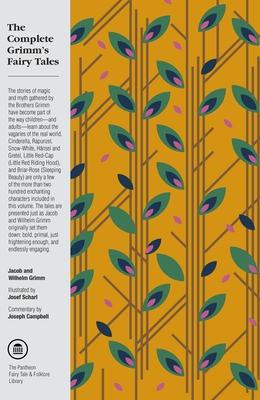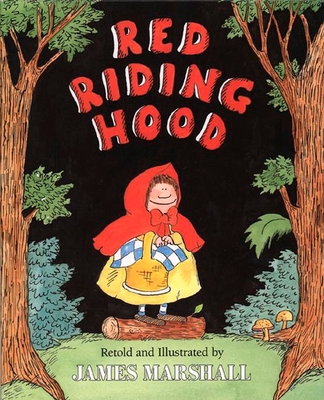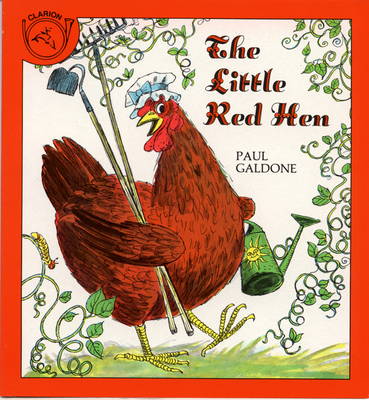One of the most daunting tasks I’ve found in building a home library is figuring out some sort of comprehensive way to introduce fairy tales and folk tales to your child. Because I’m a completist. If I start a series of novels, I have to read ALL OF THEM, even if I start hating the series after volume three. The same goes for TV shows, movie series, and comic books. And, if I do eventually abandon whatever series I’m reading or watching, I spend lazy afternoons on the internet keeping up with spoilers, so I know what’s going on, even if… you know, I now profess to hate it. (So many hours I’ve spent on Wikipedia reading Uncanny X-Men spoilers and I haven’t bought an issue since the 1990s.) It’s just how I’m wired.
So, as a completist, when I started buying books for my daughter before she was born, I was very cognizant of the fact that it was up to me, as her father, to introduce her to the world of folklore and I didn’t want to leave any gaps in her education. One of the THE first books I ever bought her was a copy of The Complete Grimm’s Fairy Tales, illustrated by Josef Scharl, which was NUTS – literally nuts. That was an insane purchase for an unborn child. Because, while the volume is complete, it is also dense, dark, and academic, with teeny tiny text and annotations galore. It makes for a beautiful reference book, but, c’mon, a kid isn’t going to touch that book until they’re either a). an adult or b). a very, very lonely teenager.
Realizing my folly, I started searching for more accessible versions of classic folk and fairy tales to share with her. I had a checklist – do I have a Red Riding Hood for her? Check. Three Little Pigs? Check. Goldilocks? Check. And I thought I’d assembled a few very decent introductions to the world of folklore for our library. I was pleased.
However, after she was born and we started reading books aloud more often, I realized that there were SO many holes in our collection. This became particularly apparent when reading the more modern fractured fairy tales – fractured fairy tales are the more meta, ironic takes on classic folklore. Many of these books – ranging from The Stinky Cheese Man to Each Peach Pear Plum to The Princess and the Pizza – have a lot of fun alluding to and referencing classic folklore, which is normally, in turn, great fun for the parents and kids reading at home. I’m a big, big child of the pop culture generation, so recognizing references is something deeply, deeply ingrained in my DNA.
But, when we started reading these “riffs” on folk tales and my daughter looked up at me quizzically, not recognizing a reference to Rumpelstiltskin or The Princess and the Pea, it bothered the heck out of me. It felt like I hadn’t done my job as a wannabe-bookish parent.
Granted, I’m now making it into a much bigger deal than it was at the time. When we’d hit a reference to a story that my daughter didn’t recognize, we’d just take a break and I’d try to explain what it was referring to – which, on occasion, was a lot harder than it probably should’ve been. If you haven’t read Rumpelstiltskin in a while, it’s an incredibly weird story, particularly when you’re trying to explain it to a three-year-old. Why did the guy tell the king his daughter could spin straw into gold? Why is everyone either horrible or stupid in the story? Isn’t it a pretty big coincidence that someone in the kingdom just overheard ol’ Rumpy blurt out his name right before the queen’s deadline? I still don’t know what the moral of the story is – “If you promise your first-born child to a creepy guy from the forest, watch out, because he’s going to call that bluff”?
All in all, I wish I’d spent more time thinking about my strategy regarding fairy and folk tales, and I wish there were more resources to help parents figure out the best way to introduce these stories to their children. Heck, even just a guide that lets you know, “Hey, this is a version of Red Riding Hood where the wolf EATS the grandma and THIS is a version where grandma just gets locked in the closet, just FYI” would’ve been nice. (I’ve had far too many moments where, 10 pages into a story, I realized that the version we were reading was way too grim and historically accurate for a 2 ½ year old at bedtime.)
So, since I’m a freakin’ genius in retrospect (and never in normal-spect), here are a few tips for parents trying to put together their own collection of essential folk and fairy tales for their young ones:
- Stay away from huge collections. While the completist in me loves the idea of “Hey, in this one volume, I have EVERY fable the Grimms ever collected,” those collections are complete pains to read with a kid. (And they kind of suck to read as an adult too.) They’re bulky and heavy and, in my experience, the sheer size and magnitude of the collection often distracts your child more than anything else. If possible, I’d stick to smaller collections that, at the most, cover 3 to 5 fables per book.
- Know your audience. As I alluded to before, differing versions of folktales have differing levels of appropriateness. You know your kid best, so, if you’ve got an easily spooked child, you definitely want to pre-check to see if the version of Three Little Pigs you’re reading is the version where the wolf actually eats the first two pigs. I actually staggered different versions of The Three Little Pigs for my daughter, starting her off with the relatively gentle retelling in Tomie’s Three Bears and Other Tales by Tomie dePaola, then moving to the slightly more aggressive version in Zoe and R.W. Alley’s There’s a Wolf at the Door, and eventually graduating to the chuckling black humor of The True Story of the Three Little Pigs by Jon Scieszka and Lane Smith.
- Don’t ignore the B-list fables. While I spent a lot of time making sure that we had acceptable versions of The Three Pigs, Red Riding Hood, Cinderella, and Goldilocks, there were many second-tier folktales that I ended up ignoring, which is a shame for several reasons. First, because they’re great stories and, second, because other picture books and fractured fairy tales reference them ALL THE TIME. Even if they aren’t necessarily A-list material, I’d suggest that you definitely look for solid retellings of The Little Red Hen, The Boy Who Cried Wolf, the inscrutable Rumpelstiltskin, The Princess and the Pea, and The Gingerbread Man. (At the very least, it’ll help them when they’re watching Shrek.)
And, if you want suggestions for some essential folk and fairy tale volumes for your home library, here are a few editions that I’d recommend:
- Anything in Paul Galdone’s Folk Tale Classics series (The Frog Prince, The Little Red Hen, The Three Billy Goats Gruff, etc.) or any of the fairy tales that James Marshall did for Picture Puffins (Red Riding Hood, Hansel and Gretel, Goldilocks and the Three Bears, etc).
- The previously mentioned Tomie’s Three Bears and Other Tales by Tomie dePaola (which covers The Three Bears, The Little Red Hen, and The Three Little Pigs) or Zoe and R.W. Alley’s There’s a Wolf at the Door (which cleverly covers a variety of wolf-themed folk tales like The Three Little Pigs, The Boy Who Cried Wolf, Little Red Riding Hood, The Wolf in Sheep’s Clothing, and The Wolf and the Seven Little Goslings).
- Rumpelstiltskin or Rapunzel by Paul O. Zelinsky, to name a few.



{ 1 comment… read it below or add one }
Awesome few tips for parents trying to put together their own collection of essential folk and fairy tales for their young ones. I enjoy reading your article. Thanks for sharing.
You must log in to post a comment.